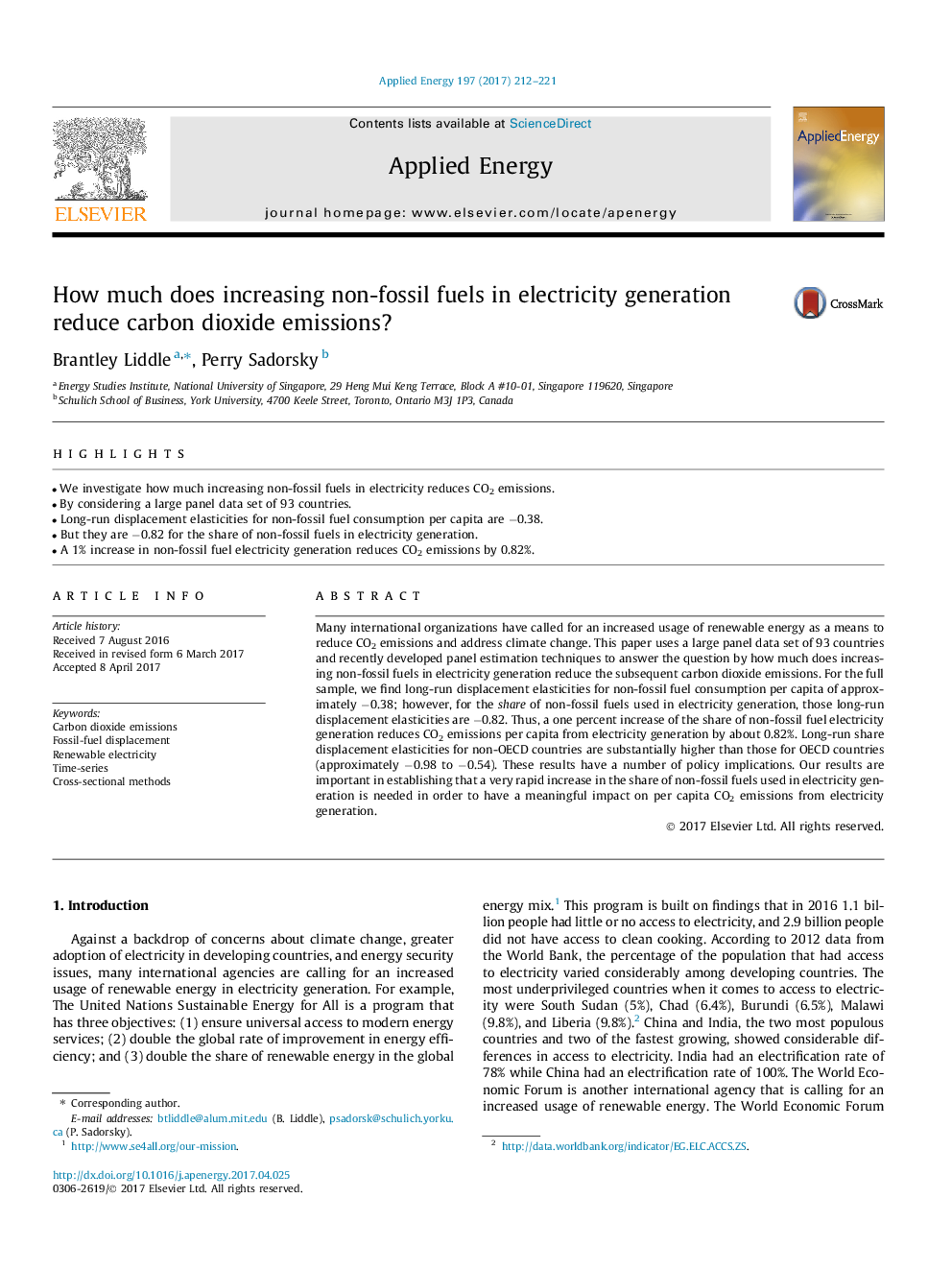| Article ID | Journal | Published Year | Pages | File Type |
|---|---|---|---|---|
| 4916259 | Applied Energy | 2017 | 10 Pages |
Abstract
Many international organizations have called for an increased usage of renewable energy as a means to reduce CO2 emissions and address climate change. This paper uses a large panel data set of 93 countries and recently developed panel estimation techniques to answer the question by how much does increasing non-fossil fuels in electricity generation reduce the subsequent carbon dioxide emissions. For the full sample, we find long-run displacement elasticities for non-fossil fuel consumption per capita of approximately â0.38; however, for the share of non-fossil fuels used in electricity generation, those long-run displacement elasticities are â0.82. Thus, a one percent increase of the share of non-fossil fuel electricity generation reduces CO2 emissions per capita from electricity generation by about 0.82%. Long-run share displacement elasticities for non-OECD countries are substantially higher than those for OECD countries (approximately â0.98 to â0.54). These results have a number of policy implications. Our results are important in establishing that a very rapid increase in the share of non-fossil fuels used in electricity generation is needed in order to have a meaningful impact on per capita CO2 emissions from electricity generation.
Related Topics
Physical Sciences and Engineering
Energy
Energy Engineering and Power Technology
Authors
Brantley Liddle, Perry Sadorsky,
